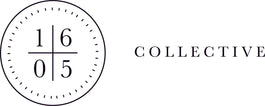Peggy Kuiper | Interview
An excerpt from Rolien Zonneveld in conversation with Peggy Kuiper in 1605 Magazine No.2 Illusion
Courtesy Peggy kuiper and Reflex Gallery
Images: Peggy Kuiper
One of the most seminal works on colour ever produced must undoubtedly be the six-volume Haishoku Soukan—The Complete Collection of Colour Combinations—published in Japan in the early 1930s. Among these volumes is a fine booklet featuring 348 side-by-side colour combinations, collated by Sanzo Wada, containing “hues never seen before”.

Sanzo Wada was an avant-garde polymath, seamlessly blending his talents across painting, costume design, fashion and kimono design. In each discipline, in all of his work, a read thread is present: a sensitivity for colour, strong visual perception, a deep understanding of form. Thumbing through his book feels like leafing through a visual poem: soft, gentle ‘Pale Lemon Yellow,’ earthy ‘Sudan Brown,’ deep red Pomegranate Purple.’ These combinations—some unexpected, some jarring, some comforting, most pleasing—are an art form on their own, stirring an instant emotional response.
This inherent appreciation for colour is also evident in Peggy Kuiper’s (1986) work. Her muted figures with spidery fingers and almond-shaped eyes, drawn in simplistic shapes, often look straight at the spectator Serene or a little solemn at times, they seem withdrawn—almost as if they haven’t noticed you are there or don’t want to be noticed themselves. Some figures seem trapped within the frame, wedged in place. Other times, they caress another body with such tenderness that you feel like a voyeur and have to look away. However, it is hard to avert your eyes; her paintings are striking and make use of colour in a way few others are able. Feasts of sepia are punctuated by vivid emerald, cobalt and fiery red enliven and embolden entire paintings.

“Colour, to me, is very emotionally charged. It speaks a truth that can only be felt,” Kuiper explains. “It is an entirely intuitive way of expressing, one that is deeply rooted in memories or stored emotions—some more at the surface of my consciousness than others.” It is a walk in nature, the change of seasons, a slightly distorted, nostalgic memory of her grandmother’s house, with its dark corners and big furniture. “I don’t over-analyse my work. I visualise it in colours and shapes, focusing on compositions. My work isn’t detailed, and I like it that way. It’s raw and pure.”
This sense of purity can be seen in children when painting or drawing is a primal way of expressing far removed from the inhibitions that develop later. Those gestural, sweeping brush strokes reveal a level of abstraction that few master later in their artistic careers, and they present an endless source of inspiration for Kuiper. In her eyes, Joan Mitchell is an artist who’s achieved this natural painterliness. Mitchell, now celebrated for her earlier overlooked works, explored abstraction’s capacity to evoke landscapes, memories, poetry and music. Her canvases grew from recollections of fields and gardens, people she loved and fought with, favourite poems, flowers. Mitchell mastered transforming emotions and memories into expansive canvases, all while resisting the influence of prevailing artistic schools or styles.

“It is such a shame that we so easily find ourselves subjected to the conditioning of what is considered beautiful or not,” Kuiper explains. “We tend to lose a sense of freedom. As we grow older, the worry starts to sink in: is it good enough? I am very pleased, however, to have reached a point where I have regained that sense of childlike wonder. I do not care what others may think. And whilst I do make figurative work, I am hugely drawn to the abstract,” she says. It is emotion in an unbridled form, like a veil between the spectator and the artist has been lifted. “That’s one of the reasons Mitchell’s work resonates so deeply. It is earnest.” Indeed, there are certain parallels to be discerned: their canvases both reveal the ways they’ve built layers: Mitchell with marks and dripping lines, Kuiper with vast swatches of colour that create vibrant, graphic figures. There is a tactility, an emotional language difficult to ignore.
For full interview shop our print magazine online:

